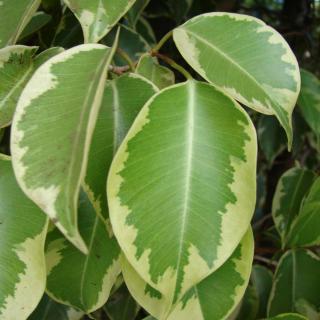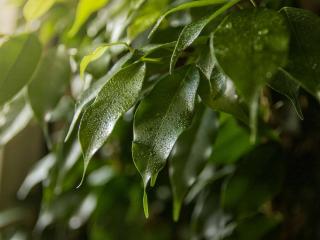

The Ficus Forever series is a collection of magnificent indoor plants from the Ficus benjamina species.
Ficus Forever facts
Name – Ficus benjamina
Trade name – Ficus forever
Family – Moraceae (mulberry family)
Type – indoor plant
Foliage – evergreen
Height – 10 feet (3 m) indoors, 10 times taller outdoors
Soil: indoor plant soil mix – Exposure: bright light but not direct sunlight
Care, pruning, watering and treatment, follow this advice to grow these beautiful Ficus trees and avoid them falling sick.
The “Forever” brand name comes from a marketing project. It aimed to produce different varieties of Ficus benjamina and make them available to the public. Each variety was paired with an exotic endangered animal. A portion of sales benefits supported rainforest jungle conservation in French Guiana. For instance, images of pandas, parakeets, parrots, chameleons, baboons and more were attached to the trees.
The beneficiary of the project was the “Fondation Trésor”, a French-Dutch foundation that supports the Trésor Natural Reserve. The Ficus Forever initiative peaked in 2009 and was the result of the collaboration between Dutch horticulturists and the Trésor foundation. The project has since been discontinued. This ficus series isn’t sold in normal horticulture stores anymore, and the Reserve itself is secure.

Whichever variety you may have gotten your hands on, the Ficus forever – actually one of five F. benjamina varieties – is one of the most resistant leaf plants and can live in the wild to grow over 150 years old.
It is appreciated for its aesthetic appeal but also for its highly adaptive survival traits that let it thrive in the most varied settings of our homes, apartments and offices.
Ficus forever is selective as regards its exposure, its watering and must be guarded against rapid changes in temperature.
Quite common for the ficus forever, this is normal as long as leaf loss is regular and not too many are falling.
If your ficus lost its leaves, check that it is well watered, and eventually proceed to topdress the pot.
It should quickly bounce back more vigorous than ever.
This is often caused by a mite attack.
This is usually due to mealybugs or scale insects.
Its preferable to wait for the soil to have dried up before watering again.
Consequently, water on average once a week.

Of course, in winter or if surrounding moisture levels are high, you may space the watering somewhat.
Feel free however to mist the leaves on a regular basis, this will increase leafage quality and keep the leaves from drying up.
Ficus forever copes with pruning very well.
Read also:
With a good-sized pot or garden box and regular topdressing, your Ficus forever can grow to reach a magnificent 6 to 10 feet (2 to 3 meters) tall!